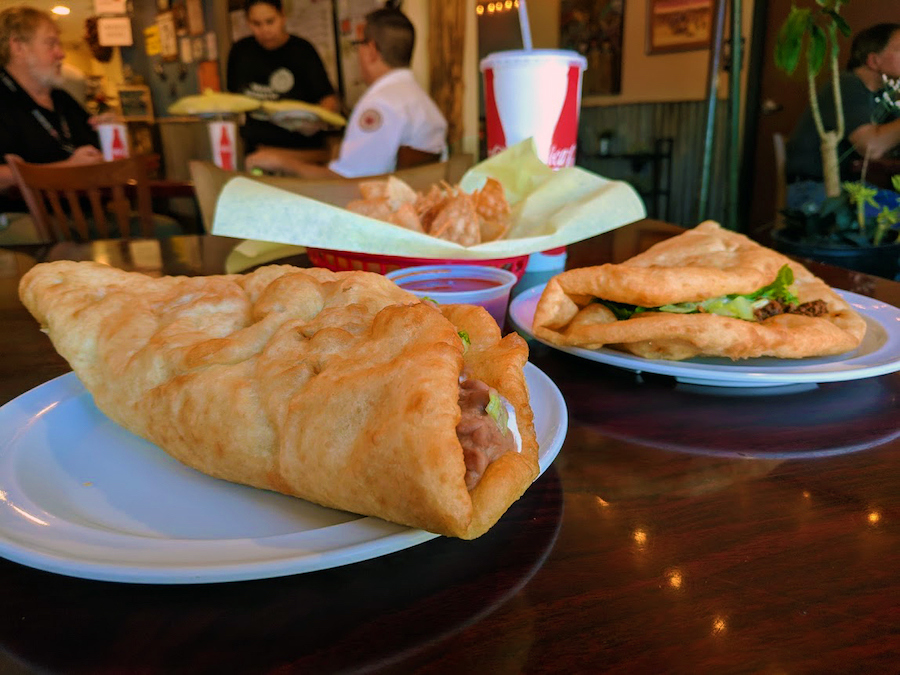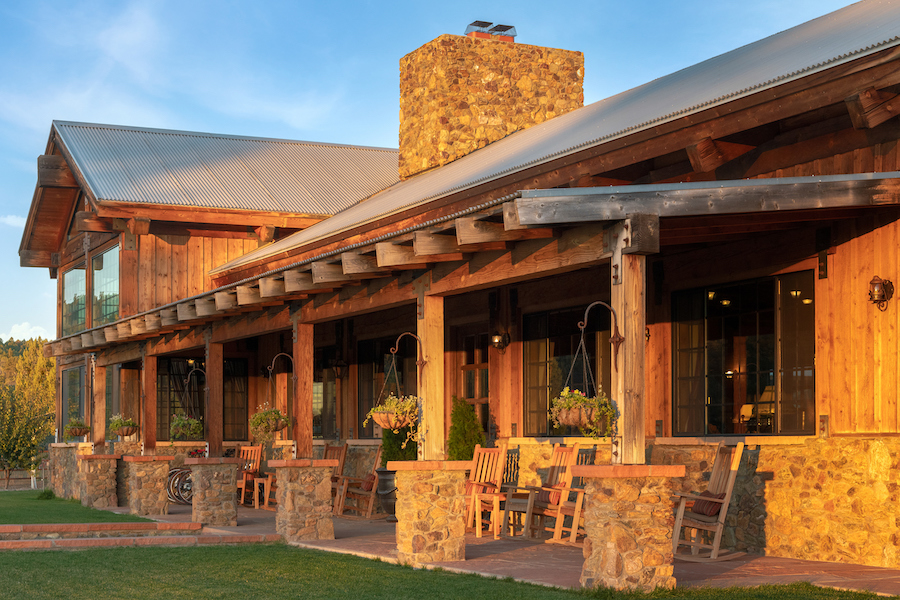Skift Take
Your attendees are arriving with new expectations about what’s on the plate and what’s at the bar. Learn how to exceed those expectations and turn your event into a culinary celebration that will satisfy every appetite for an unforgettable experience.
Food is a critical piece of helping humans connect — and that’s just as true at a professional business event as it is at the family Thanksgiving table. Today, however, meal time arguably plays an even more important role than ever before in building relationships: Since more professionals are failing to bother breaking for lunch, meetings and events have an opportunity to help attendees rediscover the magic of putting down their screens, taking the time to savor new flavors, and connecting with the people across the table.
It’s easy to look at catering decisions as another logistical puzzle piece, but it’s essential to make sure that every facet of the dining experience fits into your recipe for success. As you look ahead to your next menu, consider these four key lessons from some of the chefs and mixologists who are responsible for putting a gold star next to Arizona on the food tourism map.
1. Put Wellness at the Center of the Plate
According to the findings from the most recent survey by the International Food Information Council, 52 percent of people are following a specific diet or eating pattern — a 13-point increase from the previous year. With clean eating, mindful eating, and calorie-counting at the top of the list, it’s clear that what’s on the plate is essential to satisfy the appetite for living better among many event attendees.
Still, it’s not all about counting calories and cutting back on carbs. Just as sustainability is now understood on a more holistic level that encompasses social justice, a truly 360-degree approach to dietary wellness should consider the entire dining experience. While the numbers on a nutritional chart are important, the slow food movement places just as much emphasis on the quality, sourcing, and cultural roots of the meals we share. It’s about reminding ourselves to slow down and appreciate the true value of the food that sustains and nourishes us.


Fine Dining Meets Top-Quality Ingredients
There’s no better place to find inspiration for health-conscious ingredients and gourmet experiences than Tucson. Named the first UNESCO City of Gastronomy in the U.S., the second-biggest city in Arizona has a renowned reputation for culinary innovation that pays homage to Mexican and Native American dishes. The city’s dining scene has plenty of all-stars including three 2022 James Beard finalists — with Best Baker going to Tucson favorite Don Guerra of Barrio Bread — and this food focus has carried over to the entire cast of resorts. Organic gardens are the norm with on-property herbs and vegetables at top-tier spots like the El Conquistador Tucson, the Westward Look Wyndham Grand Resort & Spa, and the JW Marriott Tucson Starr Pass Resort.
The Complete Farm-to-Table Experience
What’s on the menu doesn’t have to be a side note to the experience, though. In some cases, mealtime can transform into an exploration of the entire farm-to-table chain. For example, Terra Farm + Manor — located on one of the largest aquifers in the state in the Prescott National Forest — is a food-focused experience where groups can spend time with full-blooded Tajima Wagyu, Icelandic sheep, French Copper Maran chickens, and more on the property’s ranch. With interactive farm tours that educate guests on over 100 different crops and hands-on educational cooking classes, the experience is a reminder that unplugging can open your sense of taste to a new appreciation for the work that goes into creating what’s on the plate.
2. Give Attendees a Booze-Free Chance to Celebrate
Meetings and events have long taken for granted that alcohol is a must-have for the complete F&B experience, but a growing number of young attendees might prefer mocktails. Data from Berenberg Research shows that the emerging cast of event participants is looking for a booze-free way to enjoy life: 64 percent of Gen Z expects to drink alcohol less frequently than older generations. It’s not just a younger generation, either. Research from NCSolutions shows that 34 percent of Americans are trying to drink less this year. Similarly, an IWSR report reveals that sales of no- and low-alcohol beverages continue to grow, with the market reaching almost $10 billion in 2022.
Mocktails & Bottled Alcohol-Free Options
A pivot away from the bar might feel tough for the meeting industry — after all, the open bar networking reception has always been an easy sell. However, having fun doesn’t have to pair with a hangover the next morning, thanks to spots like The Nixer, a pop-up non-alcoholic destination in Phoenix, and The W Scottsdale’s Sushi Roku, where you’ll find a trio of mocktails.
Earlier this year, Arizona Brewing Company debuted Arizo[na], the first non-alcoholic IPA brewed in the state. Beyond proving that non-alcoholic (NA) beer can be tasty, it’s also committed to addressing declining water flows in the Southwest by partnering with Sinagua Malt, a company that works with local farmers to adjust their water-intensive crops and keep the Verde River flowing.
Perhaps the best place to learn about the ability to enjoy NA beverages is Tucson’s Choice & Co., a shop solely focused on serving those who don’t want any booze with help from Jessica English, a James Beard-award winning culinary broadcast journalist.
“If most people that drink alcohol pay attention to wellness, [our company] is about giving you a true choice,” English told Tucson Foodie earlier this year. “Up until now, the non-alcoholic choices were so inferior to our alcohol choices that it really wasn’t a choice at all. This company exists because we have gone out and tasted everything. We have curated the most irresistible and delicious products that when you come here, you can now say that you absolutely have a choice.”
Organizers have the same choice, too. It’s no longer a game of adding an O’Doul’s to the menu. With so many inventive zero-proof cocktails, craft beers, and wines, the bar can be a welcoming place for every attendee now — even those who don’t want to drink a sip of alcohol.
3. Honor the Culinary Culture
Meals at events aren’t simply about chasing the latest flavor pairings or dietary trends. They are also an opportunity to introduce attendees to the rich kitchen traditions that have shaped the region. In Phoenix, the menu at the Fry Bread House — a past James Beard award winner — includes fry bread tacos made with the delicious doughy goodness and red and green chili beef stews that celebrate the cuisine of the Tohono O’odham Nation. It’s important to note that fry bread — one of the foods you have to eat when you’re in Arizona — is more than taste, too: It’s a piece of history. The dish was born out of desperate need when the Navajo had to make do with limited food supplies on a 300-mile deportation walk from Arizona to a reservation in New Mexico in 1864.


At Kai in the Sheraton Grand at Wild Horse Pass, the only AAA Five Diamond and Forbes Five Star restaurant in Arizona, the menu is more than a chance to enjoy delicacies. Beyond offering local specialties like grilled tenderloin of tribal buffalo with cholla buds and saguaro blossom syrup, it’s also a preservation project. Kai, which means “seed” in O’odham or Pima, participates in a program that works to avoid the extinction of indigenous seeds by continuing to grow and utilize the endangered seeds.
4. Embrace Every Local Ingredient
While meeting planners are accustomed to working with chefs to use what’s in season, Arizona is a reminder of the importance of using ingredients that might not be top of mind. Consider the cactus — a plant that Freddie J. Bitsoie, the former executive chef at the National Museum of the American Indian in Washington, D.C., and a member of the Navajo nation, learned to love during his time in Phoenix.
“During my time at culinary school, I built relationships with people from tribes in the area and learned how to harvest the pads, fruits and buds of cactus plants,” Bitsoie wrote for Food Network. The full article highlights innovative ways of incorporating cactus into chicken dishes, pasta sauces, and sweet margarita infusions.
The cactus isn’t the only surprising addition to the menu. Arizona’s diverse land ranges from dry desert to 10,000-feet mountain peaks, which means that meeting planners have access to a wide range of produce. Couple a culture of preservation with this climate diversity, and you have more than 160 of the same heirloom varieties of fruits, grains, and vegetables that have been grown here since Arizona was founded in 1912.
“We have amazing farms around us, and I try my best to pay homage to the land,” chef Maria Mazon at BOCA, Tucson, said in a recent interview with Spiceology. “I’m from here. If I don’t feel proud of the ingredients, that’s not going to come through in the dish.”
Award-Winning F&B With Local Flavors
As you look ahead to your next event, you can count on a cast of Mazon’s colleagues in the culinary world for inspiration. The Foodist Awards’ 2023 Top Chef Rochelle Daniel cooking up modern American at Flagstaff’s Atria, Wendy Garcia working on vegan and vegetarian Latin American flavors at Tucson’s Tumerico, Nephi Craig using locally-sourced produce for seasonal Apache dishes at Cafe Gazhóó in Whiteriver — the list of James Beard-nominated chefs in Arizona climbs as high as the tallest saguaro cactus in the Sonoran Desert (78 feet tall, to be exact, if you’re keeping track).
For more information on all the culinary delights and exciting F&B experiences that Arizona has to offer your next meeting or event, visit ArizonaMeetings.com. And if you’re eager to start planning an outdoor meal, download our checklist for outdoor activities and events. More than just your average 5-point checklist, it’s the perfect cheat sheet to help you manage outdoor venue logistics, design around the weather, and coordinate supplies.
This content was created collaboratively by the Arizona Office of Tourism and Skift’s branded content studio, SkiftX.







